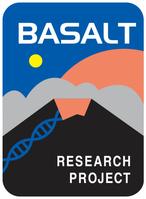Grad student studies simulated life on Mars
Hill, an IE Master’s student from Calgary, Alberta, is part of the Biologic Analog Science Associated with Lava Terrains (BASALT) team studying human response in Mars-like environments. Working with Professor Barrett Caldwell, she integrates live physiological monitoring - such as heart rate and breathing - into the simulation.
"We’re integrating physiological monitors into simulation, to see what we can learn about human performance based on physiological responses to certain activities," she explains. "I am working on analyzing that data now to see how different extravehicular activity tasks and environments affect physiological parameters."
She deployed with the BASALT team to Craters of the Moon National Monument and Preserve in Idaho in July and will take part in BASALT’s next deployment to Hawaii in November.
"Working with NASA is kind of a dream come true!" says Hill.
BASALT is an international team of scientists, engineers, mission operators, and astronauts who are dedicated to enabling the human-robotic exploration of Mars. The team conducts scientific fieldwork under simulated Mars mission constraints to evaluate strategically selected concepts of operations and capabilities with respect to their anticipated value for the joint human and robotic exploration of Mars.
For more information: BASALT https://spacescience.arc.nasa.gov/basalt
Writer: DeEtte Starr, starrd@purdue.edu

